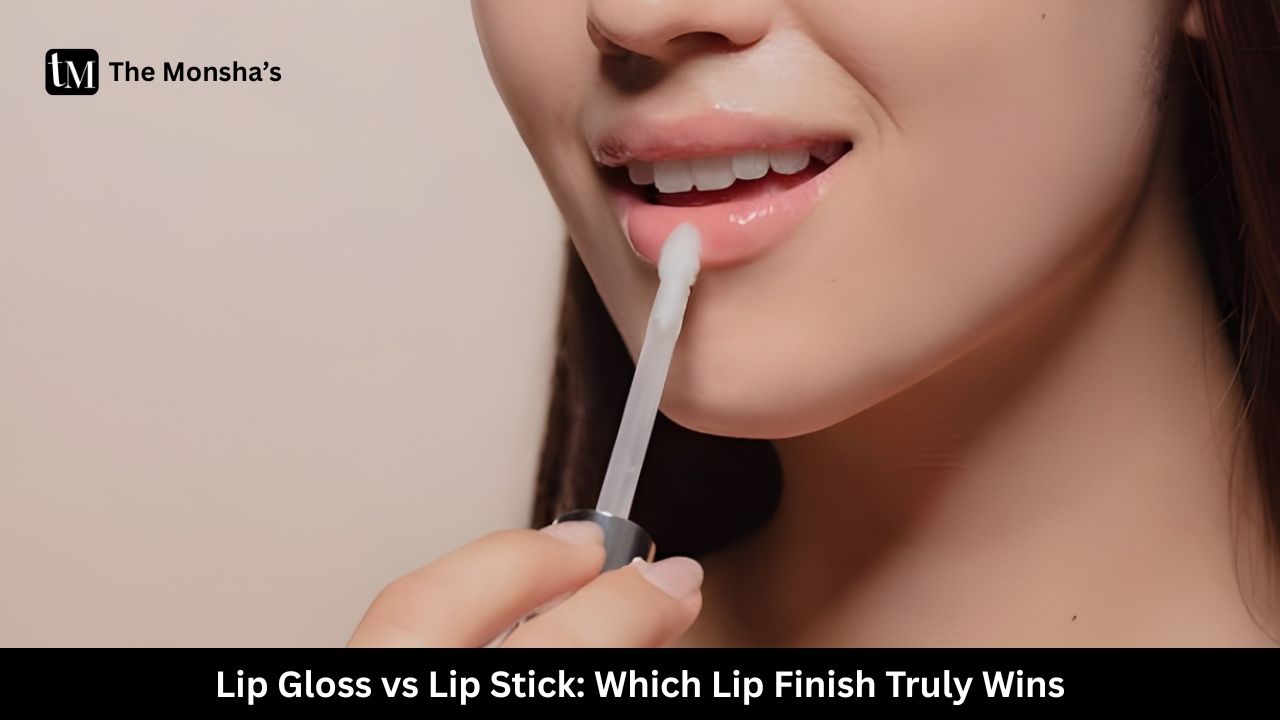TL;DR
Neither lip gloss nor lipstick is “better” in absolute terms. Gloss brings high-shine, comfy hydration, and easy touch-ups. Lipstick delivers bolder pigment, cleaner edges, and longer wear. Your best pick depends on your lip condition (dry vs normal), the weather, the occasion, and how much reapplication you can tolerate. For most people, the real win is layering: lipstick for color + a whisper of gloss in the center for plush, dimensional lips. Bas, game over. 💋
Introduction – The 8 a.m. Mirror Debate 😮💨
We’ve all had that morning stare-down: glossy, juicy lips that look fresh… or a bold, power lip that says “I run the meeting.” As a perpetually caffeinated, slightly tired beauty blogger with too many tubes in every handbag, here’s the truth I’ve learned: both formats are brilliant when you use them right. The trick is matching the formula to your lips, your day, and your vibe. “Aaj ka mood kya hai? Glow ya go-big?” 😉
What They Actually Are (and Why That Matters) 🧪
Lipstick — Pigment First, Finish Second
- Core build: waxes (shape), oils/emollients (slip), high pigment (coverage), and film-formers (grip).
- Finishes: matte, satin, cream, sheer, and liquid long-wear.
- Why you care: more pigment = bolder color + sharper edges; film-formers = better longevity; but some mattes can feel drying if your lips are flaky.
Lip Gloss — Shine First, Care Second
- Core build: lighter oils/emollients (gloss), thickeners (cushion), lower pigment (tint), sometimes plumping agents and conditioners.
- Types: clear, tinted, shimmer, plumping, treatment/hybrid gloss.
- Why you care: emollients cushion the lip surface and reflect light → instant juicy look. Trade-off? More transfer and more frequent touch-ups.
The Real Differences (Side-by-Side) 📊

What the science & pro practice say (in plain speak):
- Film-formers and volatile components help certain lipsticks set and last.
- Emollient-rich glosses reduce the look of texture by filling micro-lines with shine (optical smoothing).
- Heavily pigmented sticks can cling to dry patches; glossy cushions mask flakes but won’t fix them—exfoliation + balm still matter.
- Safety note: quality matters. Some lip products (across categories) have been found to contain trace metals or irritating fragrances. Stick to reputable brands, retire very old tubes, and listen to your lips.
Which One Is Better… For You (Situational Guide) 🎯
Everyday / Low-Effort Office Days
- Pick: Tinted gloss or sheer lipstick.
- Why: Quick, comfy, mirror-optional touch-ups. Hydration > high drama.
Long Events / No-Fuss Wear
- Pick: Long-wear lipstick (liquid or cream with film-formers).
- Why: Color lock, crisp edges, fewer trips to the restroom.
Dry, Chapped, or Sensitive Lips
- Pick: Treatment gloss or balmy/satin lipstick.
- Why: Emollients soothe; avoid ultra-matte until lips recover. “Pehle repair, phir flare.”
Statement Evenings / Photographs
- Pick: Bold lipstick + micro-gloss center pop.
- Why: Depth and definition from lipstick; a dab of gloss for pouty dimension.
Humid, Windy, or Hair-Down Days
- Pick: Satin lipstick (gloss + open hair = sticky disaster).
- Why: Less stick, fewer “hair-on-lip” jump scares.
Pro Tips & Application Hacks (That Actually Work) 🛠️
Prep Like a Minimalist
- Night before: gentle lip exfoliation + thick balm.
- Morning: thin balm; blot before color (too much slip = feathering).
Lock the Edges
- Lip liner: trace and fill slightly for a stain base; reduces migration.
- Long day: set borders with a touch of translucent powder (keep it micro).
Layer for the Win
- Dimension trick: lipstick → blot → reapply lightly → tiny gloss only at the center.
- Matte rescue: press a smidge of balm over matte when lips feel tight.
Keep It Clean
- Refresh without build-up: before reapplying gloss, blot off old layer to avoid goopiness.
- Shelf life: rotate tubes; if smell/texture changes, alvida.
Ingredient Watchlist (Simple, Not Scary) 🔍
- If you’re sensitive: favor fragrance-free or low-fragrance.
- If you’re dry: look for shea, jojoba, squalane, hyaluronic, panthenol.
- If you need grip: film-formers and silicones help color stay.
- If tingles bug you: avoid menthol/cinnamon in plumping glosses.
- If you’re cautious: choose reputable brands; avoid super old, off-smelling products.
Quick Decision Table (Cheat Sheet) 🧭

What to Expect (Realistic Wear Timeline) ⏳
- Hour 0–2: Gloss = peak shine; lipstick = peak saturation.
- Hour 3–4: Gloss needs a refresh; lipstick softens but holds.
- After meals: Gloss usually gone; lipstick leaves a stain (liquids last longer if you blot before eating).
- End of day: Lips happiest if you remove gently and re-nourish. Raat ko sone se pehle balm lagao—kal ka lipstick bhi khush, tum bhi. 🌙
Conclusion – The Verdict (and a Little Sass) 💁♀️
There’s no single queen here. Gloss is your fast filter—hydrating, youthful, effortless. Lipstick is your power suit—defined, decisive, enduring. Most days, I pick both: lipstick for structure, a dot of gloss for plush shine. Try it and tell me your lip finally doesn’t fight your lipstick. “Shaanti milegi, promise.” 🙃
FAQs 🙋♀️
Q1: Can I wear gloss over lipstick?
Yes—keep gloss to the center to avoid feathering and sticky edges.
Q2: Which is better for dry lips?
Treatment gloss or a balmy/satin lipstick. Avoid ultra-matte till your lips heal.
Q3: How do I stop lipstick from cracking?
Exfoliate gently, use a thin balm first (blot excess), apply in thin layers, and avoid over-powdering.
Q4: Does gloss always transfer more?
Typically yes, because it stays “wet.” You can extend wear by blotting first and using thinner coats.
Q5: Are plumping glosses safe for sensitive lips?
If you’re reactive, skip menthol/cinnamon-based plumpers; choose peptide- or hyaluronic-based options.
Q6: Will gloss make my lips look bigger in photos?
A touch at the center reflects light and gives a fuller look—just don’t overdo it.
Bonus: Mini Lip Routine (30 Seconds) ⏱️
- Blot off balm → 2) Line lightly → 3) Swipe lipstick → 4) Blot → 5) Tap gloss at center. Done.


